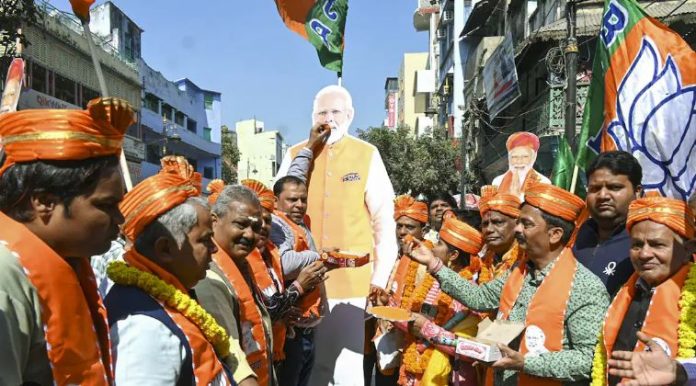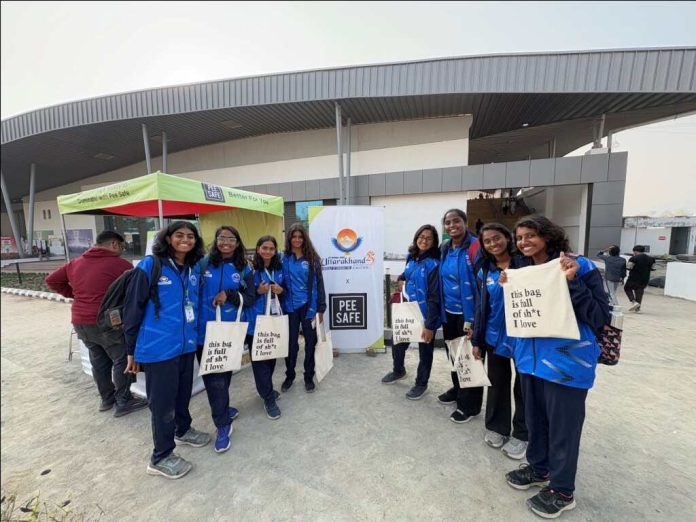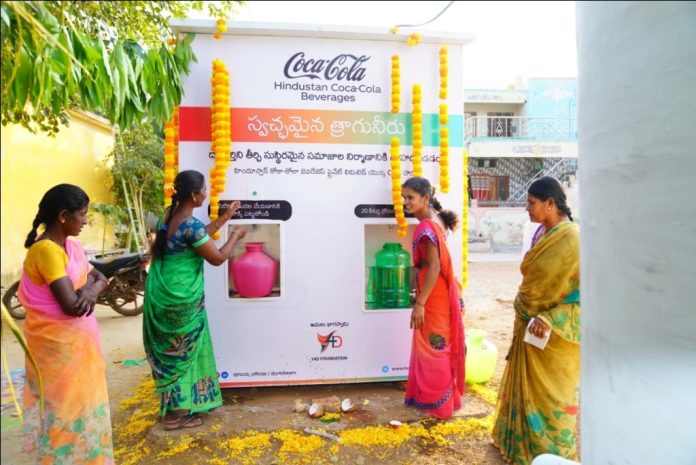किन्नर अखाड़े की Mahamandleshwar Kalyani Nand Giri पर जानलेवा हमला ,प्रयागराज महाकुंभ की घटना
किन्नर अखाड़े की Mahamandleshwar Kalyani Nand Giri और उनके शिष्यों पर कुछ अज्ञात लोगों ने हमला कर दिया, जिसमें महामंडलेश्वर बुरी तरह घायल हो गईं और उनके साथ उनके शिष्य भी। हमले की वजह अभी पता नहीं चल पाई है , हालांकि पुलिस ने अपनी जांच शुरू कर दी है।
Prayagraj Mahakumbh में घटी दुर्घटना
Prayagraj Mahakumbh में किन्नर अखाड़े की mahamandleshwar Kalyani Nand Giri उर्फ छोटी मां पर 13 फरवरी को जानलेवा हमला हुआ। हमले में Kalyani बुरी तरह ज़ख्मी हो गईं। उनके साथ उनके तीन शिष्यों पर भी हमला किया गया। घटना की जानकारी मिलते ही पुलिस वारदात की जगह पहुंची और जांच शुरू कर दी। कल्याणी और उनके शिष्यों को महाकुंभ मेला क्षेत्र के सेंट्रल अस्पताल में दाखिल किया गया है। पुलिस को मिली जानकारी के अनुसार Mahamandleshwar Kalyani Nand Giri गुरुवार 13 फरवरी की देर रात महाकुंभ मेला क्षेत्र सेक्टर 16 स्थित किन्नर अखाड़े से निकलकर अपने घर सदियापुर जा रही थीं। अखाड़े से निकलकर थोड़ी ही दूरी पर कुछ लोगों ने आशीर्वाद लेने के बहाने से उनकी कार रुकवाई। जैसे ही कल्याणी कार से नीचे उतरीं, बाहर खड़े लोगों ने धारदार हथियारों से उनपर वार कर दिया। उनके बचाव में आगे आए उनके शिष्य भी इस हमले में घायल हो गए।
kalyani Nand Giri से पहले Himangi Sakhi पर हुआ था हमला
कुछ दिनों पहले इसी अखाड़े की Mahamandleshvar Himangi Sakhi पर भी हमला हुआ था। उनपर हमला उनके कैम्प में ही हुआ था। खुद पर हुए हमले का आरोप उन्होंने आचार्य Mahamandleshwar Laxmi Narayan Tripathi पर लगाया था। अपने बयान में उन्होंने आशंका जताई थी कि Mamta Kulkarni की Mahamandleshwar पद पर नियुक्ति के विरोध के कारण उनपर हमला किया गया है जिसका खंडन महामंडलेश्वर Laxmi Tripathi ने किया था। भूतपूर्व बॉलीवुड अभिनेत्री Mamta Kulkarni को Mahamandleshwar बनाए जाने के बाद से किन्नर अखाड़ा विवादों में रहा है। कुछ लोगों का ये भी मानना है कि ये हमले किन्नर अखाड़ों की सत्ता को लेकर चल रही होड़ का परिणाम हैं।
‘Baby you are always flying around the world’, Sukesh Chandrashekhar gifts personalised jet to Jacqueline Fernandez on Valentine’s Day
Jailed conman Sukesh Chandrashekhar has gifted a customised Gulfstream Jet to Bollywood actress Jacqueline Fernandez on Valentine’s Day. The jet has Jacqueline’s initials JF customized on the exterior and interior and the registration number of the jet is also her date of birth!
Sukesh has also written a love letter addressed to the actress from Mandoli Jail, where he is currently in. In the letter, the alleged conman expressed his love for the actress addressing her as ‘Jackie’ and ‘Baby’ and claimed that his ‘relationship’ with the actress started on a Valentine’s Day.
“Baby you are always flying around the world for work shoots, now with this Jet, your travel will be extremely easy at your choice, and convenience,” he mentioned in the ‘love letter’.

The Gulfstream Jet has Jacqueline’s initials JF customized
“This Valentine’s is also extremely special because it’s just one step away from spending rest of our Valentine Days of our lives together. Baby before I say further I wanna take a moment to say, Jackie I really really love you, you are the best Valentine in the world, love you like crazy. Baby you know, how special Valentine’s Day is for us, our relationship started on the day of Valentines, the day where we forgave and accepted each other the way we are, this will always remain the most special day of our lives. Its valentine how can I not surprise you baby, your Valentine’s Day present is a specially made Gulfstream Jet, with your initials JF customized on the exterior and interior,”
Registration number has Jacqueline’s birth date
The registration number of the jet has been made according to the date and birth month of Jacqueline, as mentioned by the conman in his letter. “It makes it extremely personalised for you my love; thanks to @Gulfstreammiddleeast for making this special for us. Baby you are always flying around the world for work shoots, now with this Jet, your travel will be extremely easy at your choice, and convenience,” his letter further reads.
Conman to declare private jet in his tax returns
The conman has also mentioned in his ‘love letter’ that he will be declaring the jet in his tax returns this year. “And paying the relevant gift taxes for the same, hereby making it fully legal and not any alleged proceeds of crime,” he wrote.
Expressing his love for his “Bomma”, Sukesh wrote, “Baby on this Valentines, I have only one wish, if there is a Re-Birth, I wanna be born as your heart, so that I can keep beating inside you. My Bomma, I am the most luckiest man living on this planet, to have the most prettiest, the most amazing human, you as my Valentine this life.”
Who Is Sukesh Chandrashekhar?
Sukesh Chandrashekhar is an alleged conman currently lodged in Delhi’s Mandoli jail in connection with a Rs 200 crore extortion case. He was rumoured to be in a relationship with Jacqueline, even though the ‘Fateh’ actress has refuted such claims and accused Sukesh of using media as a tool to defame her. However, Jacqueline is also accused in the case and has been questioned by the Enforcement Directorate (ED) on several occasions.
New India Cooperative Bank पर RBI ने 6 महीने का बैन लगाया, नहीं कर पाएंगे ट्रांजेक्शन
भारतीय रिजर्व बैंक (RBI) ने न्यू इंडिया को-ऑपरेटिव बैंक (New India Co-operative Bank) के खिलाफ 6 महीने का प्रतिबंध लगा दिया है। इस RBI Ban New India Cooperative Bank के कदम से ग्राहक अब अपने खातों से पैसे नहीं निकाल पा रहे हैं और बैंक के साथ नया व्यापार भी नहीं कर सकते। इस बैंक के देशभर में 26 शाखाएं हैं, और अब कई खाताधारक अपनी जमा राशि तक पहुंचने में परेशानी महसूस कर रहे हैं। ये पाबंदियां बैंक की आर्थिक स्थिति में सुधार होने तक जारी रहेगी। इस फैसले के बाद ग्राहकों में चिंता बढ़ गई है।
आरबीआई के बैन के बाद अब New India Cooperative Bank के ग्राहकों का क्या होगा
बैंक में जमा ₹5 लाख तक की राशि बीमा के तहत सुरक्षित है। अगर किसी का लॉकर बैंक में है, तो उसे अपना सामान वापस लेने की अनुमति दी जाएगी। जानकारों का मानना है कि 90% खातों में जमा राशि ₹5 लाख से कम होगी, इसलिए घबराने की जरूरत नहीं है। जिन लोगों की जमा राशि ₹5 लाख से अधिक है, उनके लिए RBI उचित समाधान निकालेगा। लोग अपने पैसों की वसूली डिपॉजिट इंश्योरेंस एंड क्रेडिट गारंटी कॉरपोरेशन (DICGC) से कर सकते हैं। हालांकि नियमों के अनुसार, DICGC सिर्फ 5 लाख रुपये तक की ही भरपाई कर सकता है। ऐसे में अगर किसी ग्राहक के 5 लाख से ज्यादा पैसे बैंक में डिपॉजिट हैं, तो भी ग्राहक को केवल 5 लाख रुपये तक ही मिल पाएंगे।
साल 1968 में हुई थी न्यू इंडिया को-ऑपरेटिव बैंक की स्थापना
न्यू इंडिया को-ऑपरेटिव बैंक पूरे 57 साल पुराना बैंक है। इस बैंक की स्थापना साल 1968 में मुंबई में हुई थी। साल 1977 में इस बैंक का पुराना नाम बदलकर न्यू इंडिया को-ऑपरेटिव बैंक रखा गया। इसी के बाद से इस बैंक की शाखाएं देश के अलग अलग राज्यों में हैं। New India Co-operative Bank News
Personal Loans for Travel: How They Can Fund Your Dream Vacation
Travelling to a dream destination is an aspiration for many, but the expenses involved often hold them back. Flights, accommodations, meals, activities, travel insurance, and other costs quickly add up, making that dream vacation seem just out of reach.
However, instant personal loans are emerging as a popular and accessible way to turn travel aspirations into reality.
In this article, we’ll dive into how personal loans for travel work and how they can help cover the different aspects of your vacation.
What Is a Personal Loan for Travel?
A personal travel loan is an unsecured loan that can be used to finance your vacation expenses. Unlike other types of loans that may be tied to a specific asset (like a car or home) or a designated purpose, personal loans offer flexibility and can be used for almost any expense, including travel.
Since personal loans are unsecured, borrowers are not required to pledge any collateral, making them an accessible financing option for individuals who may not have significant assets.
How Can a Personal Loan Fund Your Vacation?
Personal loans for travel can cover a wide range of expenses, such as flights, accommodation, local transport, sightseeing, and other activities. Here are some key areas where this loan can be particularly helpful:
1. Flights and Local Transport
Airfare is often one of the largest expenses when planning a trip, especially for international or remote destinations. A personal loan can help cover the cost of your flight, allowing you to book tickets without worrying about upfront costs. In addition to flights, the loan can also help with transportation once you’ve arrived at your destination, including car rentals, taxis, or private transfers.
2. Accommodation and Lodging
Whether you’re staying at a luxury resort, a boutique hotel, or a budget-friendly Airbnb, accommodation is another significant cost of travel. You can use the loan funds for deposits or to cover part of your booking in advance, ensuring that your stay is secure and well-planned.
3. Food and Dining
Eating out is one of the pleasures of travel, but fine dining expenses can add up quickly, especially in tourist hotspots. From casual meals to fine dining, access to a personal loan makes sure that you won’t have to worry about your food budget while travelling.
4. Sightseeing and Tourist Activities
From visiting historical landmarks and museums to embarking on adventurous excursions like zip-lining, scuba diving, or city tours, sightseeing can become expensive. A personal loan can help you experience everything your destination has to offer without worrying about going overboard with your budget.
5. Travel Insurance and Emergency Expenses
Travel insurance is essential for protecting yourself against unforeseen circumstances, such as flight cancellations, lost luggage, or medical emergencies. You can pay for comprehensive travel insurance using a personal loan, providing peace of mind during your trip.
6. Visa and Documentation Fees
For international travel, visa fees, passport renewal costs, and other documentation-related expenses can be significant. A personal loan can cover these fees, ensuring you’re able to complete all the necessary steps for your trip without delay. Apply for the loan in advance to make sure you’re fully prepared before your departure.
Benefits of Using a Personal Loan for Travel
1. Quick Access to Funds
One of the biggest advantages of instant* personal loans is that they are typically approved and disbursed quickly, depending on your eligibility and the lender’s policies. This speed helps you take advantage of time-sensitive travel offers, such as discounted airfares or limited-time hotel promotions.
2. No Dent in Your Savings
Many people rely on their savings to fund their vacations, which can significantly reduce their financial cushion for future needs or emergencies. By opting for a personal loan, you can preserve your savings while still having the financial flexibility needed to enjoy your trip.
3. Flexible Repayment Tenures
Personal loans usually come with flexible tenures ranging from 12 to 60 months. You can choose a loan tenure that fits your financial situation, ensuring manageable monthly payments alongside your existing expenses.
4. Competitive Interest Rates
Eligible applicants with strong credit scores (typically 750 and above) often enjoy competitive interest rates, which can help reduce the monthly EMI (Equated Monthly Instalments) and the overall cost of the loan.
Conclusion
Personal loans for travel can be a smart financial solution when used responsibly. Whether you’re funding flights, accommodation, activities, or insurance, a personal loan provides the flexibility and financial support needed to enjoy your dream vacation without depleting your savings. You can easily determine your eligibility for a personal loan by using a personal loan eligibility calculator provided by online lenders such as SMFG India Credit. This tool can help you understand your loan eligibility, interest rates, and EMIs based on your financial information.
However, before applying, it’s essential to evaluate your repayment capacity carefully. Be sure to consider any associated charges, such as processing fees and late payment penalties, to avoid unexpected costs later on. Assess your budget and borrow only the amount you truly need to avoid any unnecessary strain on your finances during the repayment period.
*T&C apply. Please note that final approval, loan terms, and disbursement process may vary based on lender policies and borrower’s eligibility.
Swipe Right, But Stay Right: Digital Harassment & the POSH Act
The digital revolution has transformed our world-ways of doing things, communicating, and social interaction. If the online world provides endless opportunities, it also introduces a new threat, primarily digital harassment. This dark underbelly of the internet consists of cyberstalking, online bullying, and other conduct that escaped the radar of the legal system. Online harassment is increasingly becoming an issue for women at the workplace.
POSH Act: A Step Forward, But Not Enough
The POSH Act was introduced to protect women from sexual harassment at the workplace. As nowadays, most work occurs online, including emails, messaging apps, and virtual meetings, organisations have to upgrade themselves to fully address issues of online harassment, even when they are working from home.
The Alarming Reality of Online Harassment in India
Statistics in India are alarming. According to the survey, of those that had encountered online harassment, 47% never reported it. When they finally did, it was usually only to media management at 40%. Even more disturbing is the impact these attacks have on mental health: 63% said that they suffered from anxiety and stress, 38% admitted to self-censorship, and 8% lost their jobs altogether as a result of the harassment.
From a Swipe to Stalking: Why Consent in Dating Doesn’t Mean Consent at Work
Let’s consider some everyday examples. Anita, a 23-year-old female, is on a dating website on which she came across Vivek. They had matching profiles, and they began conversing with each other and agreed to meet. They met for dinner, enjoyed themselves, and parted ways. They exchanged some words later, but nothing much, and after a couple of days, they lost touch. Anita, after a few days, joined a new company and found Vivek also working there. Noticing Anita, Vivek took it upon himself to introduce her to everyone; however, he added that they dated for a while and made some comments about her, which made Anita uncomfortable as people started gossiping about her. She started avoiding Vivek, but Vivek refused to understand and continued on the pretext of helping her. Anita then started getting messages from unknown numbers for dating requests and to share her pics and videos.
Here, Anita was unsure that the requests she was receiving were due to Vivek’s actions and by other office colleagues or by strangers!! Whether she should approach the Internal Committee or to the Police, which causes immense mental harassment to her leading to anxiety and stress.
How Can the POSH Act Evolve to Address Digital Harassment?
To really safeguard women in the workplace today, the Internal Committee under POSH Act must update themselves to handle digital harassment. Some of the significant changes that will make a difference are as follows:
Clear Reporting Mechanisms: Companies need to update their IT and social media policies to include explicit reference to digital harassment. The updated policies should include clear, easily available reporting mechanisms for employees to report incidents without any difficulty. Companies need to have robust data retention policies, keeping digital material, like CCTV footage, for at least 210 days (providing 180 days for complaints to be filed and 30 days for initial investigation by an inquiry committee).
Comprehensive Training: The employees should be trained to recognize and address cyber-harassment, realising that abusive behavior online is the same as physical misconduct. IC members should also be provided with complete training.
Stronger Cybercrime Laws: Cybercrime legislations should be strongly enforced including Bhartiya Nyay Sanhita and DPDP Act.
The Challenges of Addressing Digital Harassment
One of the biggest challenges is to prove that digital harassment is connected to the workplace. When a coworker is behind an online attack, it is usually hard to gather enough evidence to tie it to their job. The anonymity of the internet makes it difficult to identify perpetrators, and fake accounts make hiding even easier. To top it all off, many people do not realise that POSH can apply to digital spaces, so they do not report online harassment.
This involves the legal system. First, in this situation, the legal system must join the club in adapting to new technology. The cybercrime law has to be much stricter in actually tracing and punishing perpetrators on the internet.
The digital world comes with enormous opportunities, but we can’t afford to overlook the risks. Updating our laws and company policies along with our awareness programs will help create safe and inclusive digital space for women. A holistic approach, including robust in-house policies, employee training, and legal reforms, will ensure that the digital age remains a safe place for all.
As we all enter the world of digital space, we should not forget that it also needs to be secured. A smile or a swipe right does not imply consent. Know the boundary of Consent – where it ends. If we know how to effectively use the POSH Act and place better safeguards for the protection of women, online as well as offline, women can thrive with professional success and will not feel intimidated by such harassment in a digital workplace for anyone.
Views of the author are personal and do not necessarily represent the website’s views.
 Noopur Singhal is an experienced Delhi-based advocate who has been serving since 2007 and has been instrumental in addressing workplace sexual harassment through her role as chairperson under the Sexual Harassment Act since 2016. She also leads initiatives like the Uttar Pradesh Anti-Sexual Harassment Council under WICCI and runs सshaktaम् Mindz, offering training and policy formulation services on POSH and POCSO laws to organizations. Her mission focuses on fostering gender balance and raising public awareness of rights and duties.
Noopur Singhal is an experienced Delhi-based advocate who has been serving since 2007 and has been instrumental in addressing workplace sexual harassment through her role as chairperson under the Sexual Harassment Act since 2016. She also leads initiatives like the Uttar Pradesh Anti-Sexual Harassment Council under WICCI and runs सshaktaम् Mindz, offering training and policy formulation services on POSH and POCSO laws to organizations. Her mission focuses on fostering gender balance and raising public awareness of rights and duties.
BJP Gears Up to Select Delhi’s New CM After Resounding Election Win
Following their success with 48 seats out of 70 in the Delhi Assembly elections, the Bharatiya Janata Party (BJP) now proceeds to choose their Chief Minister. The decade-long governing Aam Aadmi Party (AAP) managed to win only 22 seats in Delhi. The BJP plans to announce its new Chief Minister after Prime Minister Narendra Modi finishes his overseas travels and returns to India on February 17. Multiple notable candidates are presently under consideration for the vacant position of CM.
Top CM Contenders Include Parvesh Verma, Satish Upadhyay, and Ashish Sood
Both Parvesh Verma and Satish Upadhyay serve as prominent candidates for the Chief Minister position. Verma defeated Arvind Kejriwal in New Delhi while Upadhyay is a former president of Delhi BJP and present MLA-elect for Malviya Nagar. Vijender Gupta has emerged as another potential candidate after being elected MLA from Rohini while serving as the former Leader of the Opposition in the Delhi Assembly.
The BJP’s decision-making process evaluates candidates through a combination of leadership skills and their reputation within the party as well as the RSS. Reportedly, the BJP has made it clear it will pick its Delhi Chief Minister from its elected MLAs instead of MPs and the party has not shown interest in adding a Deputy Chief Minister position to the Delhi government. The party seeks leaders from Punjabi and Purvanchali backgrounds along with female leadership to form a balanced executive team.
Rekha Gupta & Other Key Figures Considered for Leadership Role
Senior BJP leader Ashish Sood, who secured a notable victory at Janakpuri is among multiple possible choices to lead the government. Sood maintains close connections with the RSS and the party leadership. RSS member Rekha Gupta who maintains a strong background in politics is emerging as a candidate for the Chief Minister position. She holds multiple significant leadership roles in BJP
demonstrating strong experience in organisational management.
With PM Modi’s return, the BJP’s decision-making process will accelerate, and the new leadership is expected to be chosen soon. The party is also working on finalising the structure of the new Cabinet, with the selection expected to reflect the party’s efforts for social representation.
Pulwama Attack: वो काला दिन, जब उजड़ गई 40 परिवारों की दुनिया
Pulwama Attack,14 फरवरी 2019 का दिन देश के इतिहास में Black Day के नाम से दर्ज है। जब पूरा विश्व प्यार का त्योहार मना रहा था ,भारत का बच्चा-बच्चा खून के आंसू रो रहा था। Pulwama हमले को आज 6 साल हो गए, लेकिन उस आतंकी हमले के दर्दनाक मंज़र की टीस आज भी हर देशवासी को उतना ही दर्द देती है। उस आतंकी हमले में CRPF के 40 जवान शहीद हो गए थे और समूचा देश ग़म के अंधेरे में डूब गया था। 14 फरवरी का दिन हर भारतीय के दिल में उन शहीदों की शहादत के नाम दर्ज़ है।
Pulwama के Avantipora में हुआ भयानक घातक हमला
14 फरवरी 2019 की दोपहर Pulwama के Avantipors इलाके से गुजर रहे CRPF के काफिले को Jaish-E-Mohammad के आतंकियों ने विस्फोटकों से उड़ा दिया। इस हमले में CRPF के 40 जवान शहीद हो गए और कई घायल हो गए। इस घटना के चलते भारत-पाकिस्तान के रिश्तों में कड़वाहट बढ़ गई क्यूंकि Jaish-E-Mohammad के इस हमले की जिम्मेदारी लेते ही इस आतंकी हमले में अप्रत्यक्ष रूप से ही सही, पड़ोसी मुल्क की भागीदारी साफ़ नज़र आ रही थी।
भारत ने लिया Pulwama Attack का बदला
Pulwama Attack के बाद पूरे देश में आक्रोश की जो लहर चली, उसने दिल्ली की कुर्सी तक को हिला कर रख दिया। इस हमले के ठीक 12 दिन बाद, 26 फरवरी को Indian Air Force ने प्रशासन की मदद से अपने साथियों की मौत का बदला लिया। 26 फरवरी की रात करीब 3 बजे Indian Air Force ने LOC पार कर Pakistan के Balakot में स्थित Jaish-E-Mohammad के आतंकी ठिकानों को हवाई हमला कर नेस्तनाबूत कर दिया। इस मिशन में Indian Air Force के 12 Mirage 2000 लड़ाकू विमानों ने हिस्सा लिया था,जिन्होंने तकरीबन 1000 किलोग्राम विस्फोटकों का इस्तेमाल कर लगभग 300 आतंकियों को मार गिराया। इनमे Pulwama हमले का मास्टरमाइन्ड आदिल अहमद डार भी शामिल था।
आज देश मना रहा Black Day
Pulwama Attack की 6 वीं बरसी पर आज देश उन सभी शहीदों को श्रद्धापूर्वक नमन करता है और उनकी शहादत को सलाम करता है। भारत में 14 फरवरी का दिन Black Day के रूप में मनाया जाता है। ये दिन समर्पित है देश के उन वीर शहीदों को, जिनकी सुबह तो Valentines Day के प्यार भरे संदेशों से हुई, पर इस प्यार भरे दिन की शाम वो देख न सके।
CSR News: Power Queens Initiative Empowers Women Athletes at the 38th National Games
New Delhi, India: Pee Safe, India’s leading hygiene and wellness brand is proud to champion the cause of women’s hygiene and confidence at the 38th National Games as the official Hygiene & Wellbeing Partner. With the ‘Power Queens’ initiative, Pee Safe is breaking barriers and redefining what it means to compete with confidence on and off the field.
Through this initiative, Pee Safe has provided game-changing essentials to young athletes ensuring they have access to sustainable and high-quality hygiene products. Each athlete received a specially curated ‘Power Queen’ bag filled with biodegradable sanitary pads, toilet seat sanitizers, intimate wipes and underarm roll-ons designed to keep them at their best, both mentally and physically.
Mr. Troy Douglas, International Athlete and Head coach Inspire Institute of Sports, emphasized the significance of addressing menstrual hygiene in sports: “For me as a coach, it’s not just about hygiene but understanding the needs of young female athletes. When a young lady is on her period, we must work together to ensure she feels supported. I am honored to stand behind this initiative, and our coaching staff is committed to making sure our female athletes are cared for both mentally and physically.”
Ms. Bharathi BL, International Athlete and Vice President of the Karnataka Athletic Association also shared her appreciation for Pee Safe’s initiative: “Being in the sports arena for a long time can be hectic and hygiene is a major concern. I have personally used Pee Safe’s products, and they have been a game-changer for me. Seeing Pee Safe actively supporting women in sports is truly inspiring. Their products help women of all ages stay confident, and I am also proud to be a Power Queen.”
The initiative has received strong support from athletes, coaches and officials alike, reinforcing the importance of hygiene in high-performance sports.
Mr. Vikas Bagaria, Founder & CEO, Pee Safe stated “As a brand that stands for empowerment and well-being, we believe that menstrual hygiene should never be a barrier to success. Our mission is to ensure that every woman athlete competes with confidence, knowing that her health and hygiene are taken care of. Through our #MakeRedGreen initiative, we are making menstrual hygiene accessible and sustainable, setting new standards in sports and beyond as the 38th National Games continue to celebrate excellence in sports, Pee Safe is ensuring that sustainability and hygiene remain at the forefront. With biodegradable sanitary products and innovative hygiene solutions, the brand is making a lasting impact, proving that when women feel their best, they play their best.
Disclaimer: This media release is auto-generated. The CSR Journal is not responsible for the content.
CSR news: CSR initiatives inaugurated by Andhra Pradesh Health Minister in Sri Sathya Sai and Anantapur districts
Andhra Pradesh, India: Hindustan Coca-Cola Beverages (HCCB), one of India’s leading FMCG companies, has launched a series of community initiatives in Sri Sathya Sai and Anantapur districts, Andhra Pradesh, as part of its comprehensive CSR approach, Project SHINE. These initiatives include the installation of a water ATM, Reverse Osmosis (RO) filters, new toilet facilities, and a comprehensive Water Access, Sanitation, and Hygiene (WASH) program. Satya Kumar Yadav, Minister of Health, Family Welfare, and Medical Education, Government of Andhra Pradesh, inaugurated HCCB’s CSR initiatives at an event held at Sivampalli, Tadimarri Block, Sri Sathya Sai District, Andhra Pradesh.
As part of Project SHINE, HCCB’s CSR initiatives include the installation of a Water ATM in Sivampalli, Tadimarri Block, Sri Sathya Sai District, Andhra Pradesh, providing villagers with safe drinking water and enhancing their quality of life. Additionally, three RO filters have been placed in Government SW Girls Hostel, Durga Nagar, Dharmavaram, Andhra Pradesh, Zilla Parishad Boys High School, Mudigubba, Sri Sathya Sai , Andhra Pradesh, and Kasturba Gandhi Balika Vidyalayas (KGBV), Tadimarri, Anantapur, Andhra Pradesh. These region-specific initiatives highlight HCCB’s dedication to meeting critical needs and promoting development in rural areas.
Additionally, as part of its Water Access, Sanitation, and Hygiene (WASH) initiative, HCCB is constructing toilet facilities at six locations in Zilla Parishad High School (ZPHS) Girls in Gunjepalle, Mudigubba Block, Anantapur District, Government BC College Boys Hostel (Residential college), Guttakindapalli Village, Mudigubba Mandal, Anantapur District, ZP High School, Gotluru, Dharmavaram block, Anantapur, Government B.C Girls Hostel, Mudigubba Mandal, Anantapur District, Zilla Parishad Girls High School, Malyavantham District, Anantapur and Zilla Parishad High School (ZPHS), Malyavantham District, Anantapur. In addition to infrastructure development, HCCB is conducting WASH sessions in schools and communities, focusing on essential topics such as personal hygiene, proper handwashing techniques, sanitation practices, adolescence, and the prevention of communicable diseases.
Commenting on HCCB’s CSR initiatives, Shri Satya Kumar Yadav, Minister of Health, Family Welfare and Medical Education, Government of Andhra Pradesh, said, ” The work done by organisations like HCCB in improving rural Andhra Pradesh is truly commendable. By providing clean drinking water through water ATMs and RO filters, they are making a significant impact on the lives of rural communities. Their WASH initiatives are also raising crucial awareness about hygiene and sanitation. These efforts align perfectly with the Andhra Pradesh government’s vision for rural development and fostering sustainable growth.”
Highlighting Project SHINE initiatives in Andhra Pradesh, Himanshu Priyadarshi, Chief Public Affairs, Communications, and Sustainability Officer, HCCB, stated, “At HCCB, we are committed to empowering communities by addressing their most pressing needs and creating meaningful, sustainable impact. Our goal is to enhance infrastructure, ensure clean water availability, foster skill development, and promote digital literacy – all aimed at crafting opportunities that significantly improve people’s lives. By driving substantial and enduring transformation, we nurture the future of our communities and contribute to the prosperity and growth of Andhra Pradesh.”
HCCB’s comprehensive CSR approach, Project SHINE, is centered on five core thematic areas: Sustainable Solutions for Environment & Disaster Management, Health & Hygiene through WASH Initiatives, Inclusive Growth via Women Empowerment & Livelihood, Nurturing Potential with Education & Skill Building, and Empowering Communities for a Better Future.
Through Project SHINE, HCCB consistently engages in various CSR initiatives including water rejuvenation and skill development training for women and youth in Andhra Pradesh. To date, HCCB’s efforts have positively influenced the lives of approximately 2 lakh individuals across Andhra Pradesh. Furthermore, HCCB has provided Digital & Financial literacy training to more than 4,000 women and has implemented several CSR projects, including the installation of water ATMs, digital Smartboards, and solar streetlights.
HCCB has also collaborated with the Andhra Pradesh State Skill Development Corporation (APSSDC) to provide sales and marketing training to 5,000 young professionals and have trained over 7,650 individuals so far. This partnership, formalized through a Memorandum of Understanding (MOU), spans seven districts in Andhra Pradesh: Vizianagaram, Srikakulam, Anantapur, Kurnool, Kadapa, Guntur, and Chittoor.
Disclaimer: This media release is auto-generated. The CSR Journal is not responsible for the content.



















